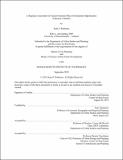| dc.contributor.advisor | Amy Glasmeier. | en_US |
| dc.contributor.author | Robinson, Sean P.(Sean Patrick),M.C.P.Massachusetts Institute of Technology. | en_US |
| dc.contributor.other | Massachusetts Institute of Technology. Department of Urban Studies and Planning. | en_US |
| dc.contributor.other | Massachusetts Institute of Technology. Center for Real Estate. Program in Real Estate Development. | en_US |
| dc.coverage.spatial | n-us-ma | en_US |
| dc.date.accessioned | 2020-02-28T20:51:22Z | |
| dc.date.available | 2020-02-28T20:51:22Z | |
| dc.date.copyright | 2019 | en_US |
| dc.date.issued | 2019 | en_US |
| dc.identifier.uri | https://hdl.handle.net/1721.1/123927 | |
| dc.description | This electronic version was submitted by the student author. The certified thesis is available in the Institute Archives and Special Collections. | en_US |
| dc.description | Thesis: M.C.P., Massachusetts Institute of Technology, Department of Urban Studies and Planning, 2019 | en_US |
| dc.description | Thesis: S.M. in Real Estate Development, Massachusetts Institute of Technology, Program in Real Estate Development in conjunction with the Center for Real Estate, 2019 | en_US |
| dc.description | Cataloged from student-submitted PDF version of thesis. | en_US |
| dc.description | Includes bibliographical references (pages 58-60). | en_US |
| dc.description.abstract | Despite having an extensive commuter rail network, Boston is also known for its traffic congestion and long commute times. The suburbs account for a significant share of Eastern Massachusetts office employment. Yet, the MBTA Commuter Rail primarily serves a single purpose, transporting suburban residents to and from their workplaces in Boston. Only a small share of morning peak riders use the train for suburb-to-suburb commutes or reverse city-to-suburb commutes, and a very small share of Eastern Massachusetts suburban office jobs are directly accessed via Commuter Rail alone. This disconnect between the Commuter Rail and suburban office employment locations raises the question of whether the land areas surrounding suburban rail stations are being utilized to their full potential as transit-oriented employment destinations. | en_US |
| dc.description.abstract | Through the application of regional planning and smart growth principles, this research project uses GIS mapping tools and quantitative analysis methods to explore the interrelated patterns of office employment, Commuter Rail ridership, and land use in Eastern Massachusetts and the Boston metropolitan area. Beginning with the hypothesis that very few suburban office jobs are currently being accessed by morning peak Commuter Rail riders, I first perform a quantitative assessment of the spatial distribution of office employment in Eastern Massachusetts, as well as existing Commuter Rail ridership patterns. I then seek to apply regional planning and smart growth principles to identify suburban Commuter Rail stations that are most suitably located to accommodate Eastern Massachusetts' future office employment growth, to understand the existing land use patterns around such stations, and to estimate the capacity for future office space development at each selected station area. | en_US |
| dc.description.abstract | For station areas that both meet the locational criteria and have the physical land capacity to potentially become future office subcenters with agglomeration benefits, I then calculate the range of estimated additional office employment that could be accommodated at such subcenters. | en_US |
| dc.description.statementofresponsibility | by Sean P. Robinson. | en_US |
| dc.format.extent | 60 pages | en_US |
| dc.language.iso | eng | en_US |
| dc.publisher | Massachusetts Institute of Technology | en_US |
| dc.rights | MIT theses are protected by copyright. They may be viewed, downloaded, or printed from this source but further reproduction or distribution in any format is prohibited without written permission. | en_US |
| dc.rights.uri | http://dspace.mit.edu/handle/1721.1/7582 | en_US |
| dc.subject | Urban Studies and Planning. | en_US |
| dc.subject | Center for Real Estate. Program in Real Estate Development. | en_US |
| dc.title | A regional assessment of transit-oriented office development opportunities in Boston's suburbs | en_US |
| dc.type | Thesis | en_US |
| dc.description.degree | M.C.P. | en_US |
| dc.description.degree | S.M. in Real Estate Development | en_US |
| dc.contributor.department | Massachusetts Institute of Technology. Department of Urban Studies and Planning | en_US |
| dc.contributor.department | Massachusetts Institute of Technology. Center for Real Estate. Program in Real Estate Development | en_US |
| dc.contributor.department | Massachusetts Institute of Technology. Center for Real Estate | |
| dc.identifier.oclc | 1140076231 | en_US |
| dc.description.collection | M.C.P. Massachusetts Institute of Technology, Department of Urban Studies and Planning | en_US |
| dc.description.collection | S.M.inRealEstateDevelopment Massachusetts Institute of Technology, Program in Real Estate Development in conjunction with the Center for Real Estate | en_US |
| dspace.imported | 2020-02-28T20:51:20Z | en_US |
| mit.thesis.degree | Master | en_US |
| mit.thesis.department | UrbStud | en_US |
| mit.thesis.department | RED | en_US |

